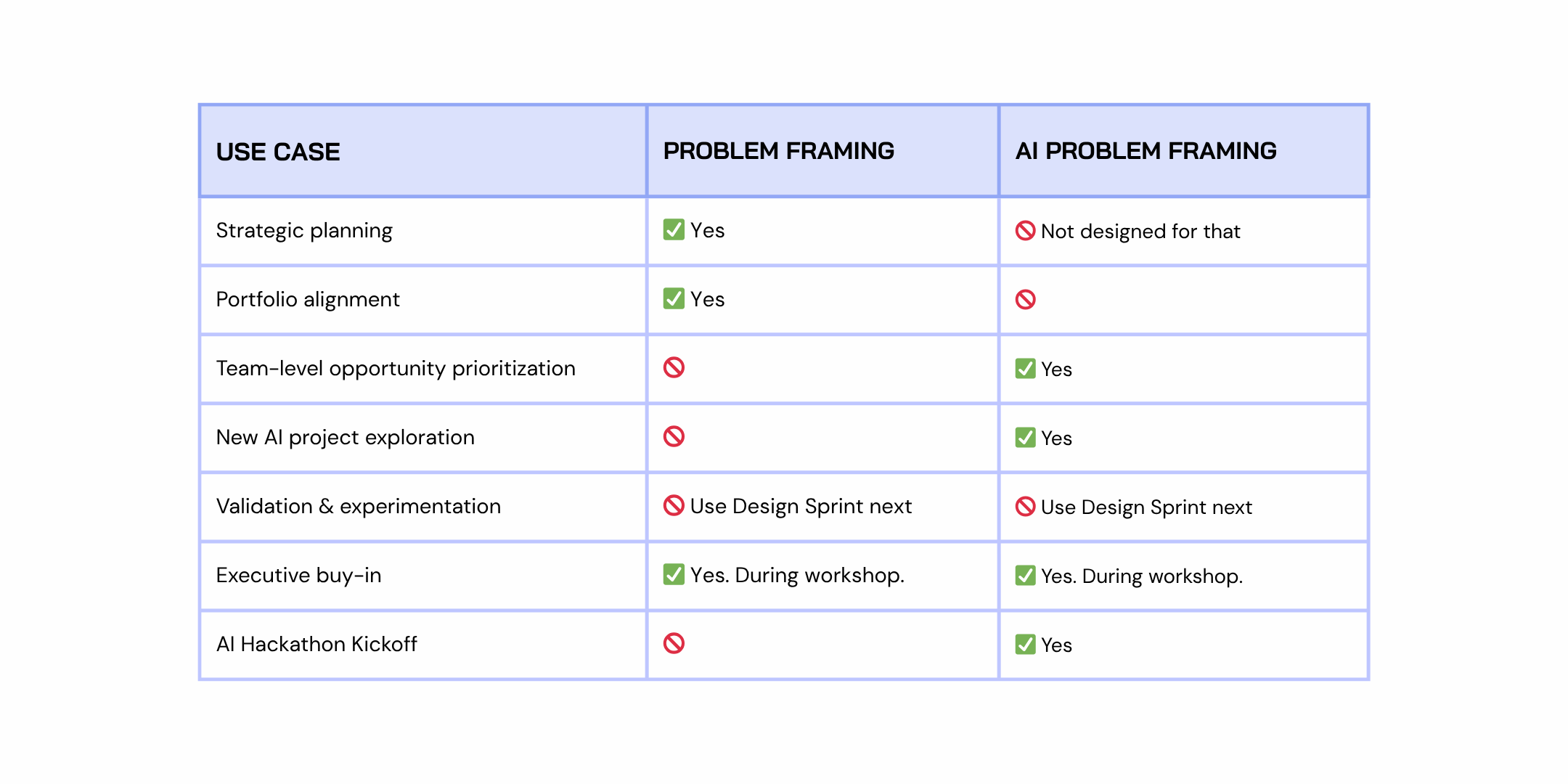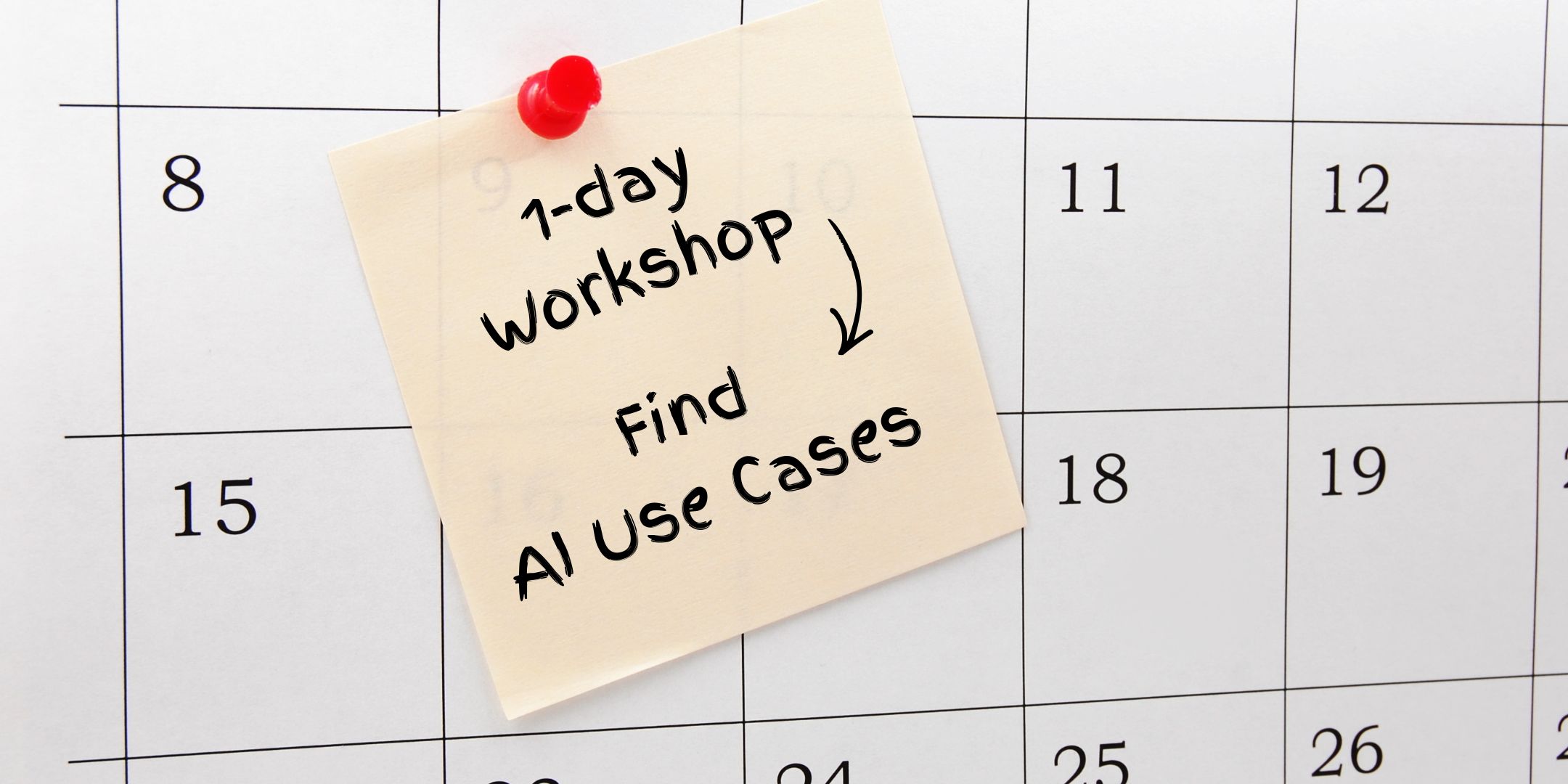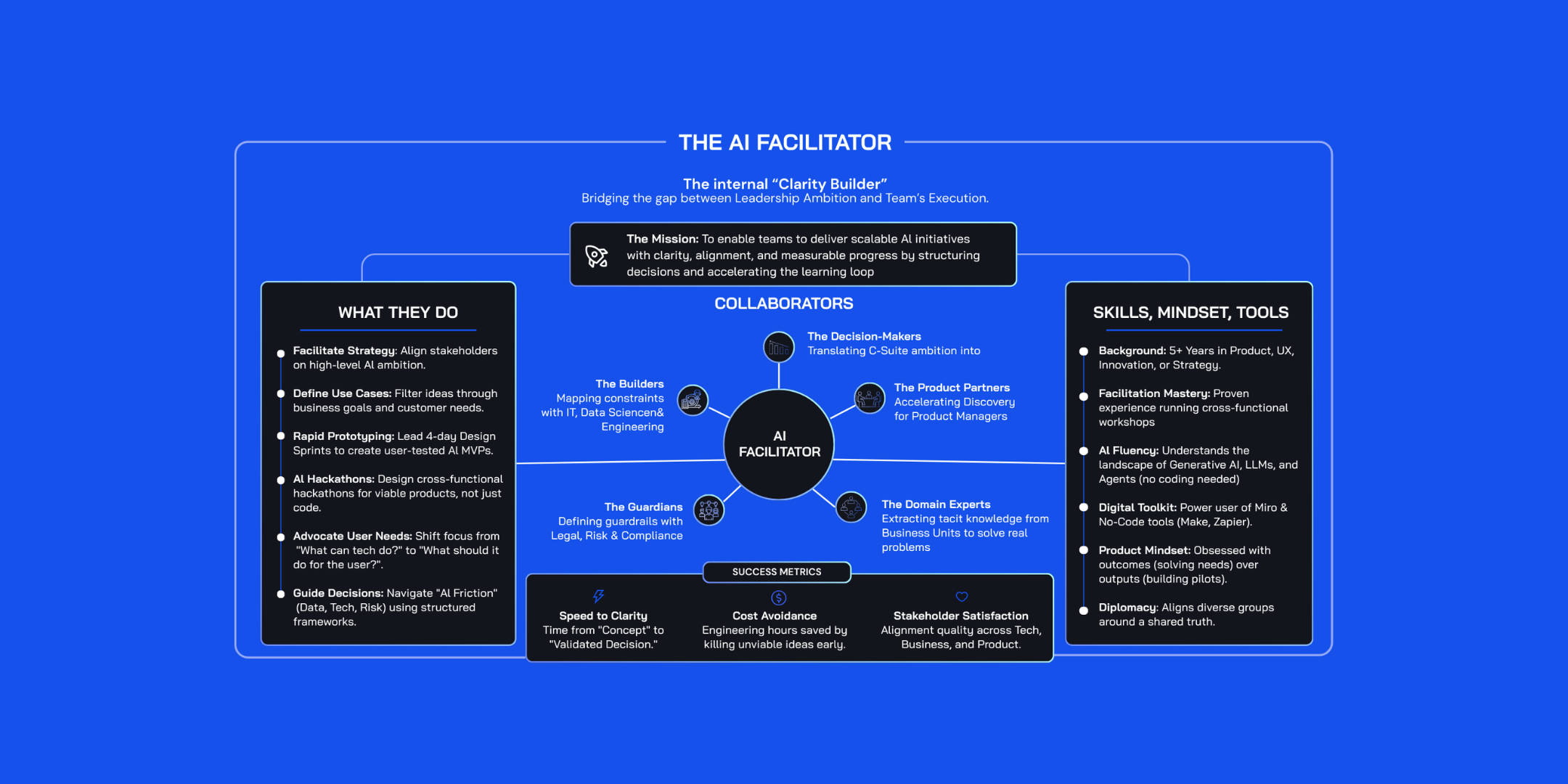Problem Framing vs. AI Problem Framing: What’s the Difference

For the last 8 years at Design Sprint Academy, we’ve been pioneering Problem Framing to help teams make smarter strategic decisions. We’ve done it with companies around the world — from banks and telcos to global retailers and healthcare innovators.
Back then, the biggest challenge wasn’t finding opportunities. It was unlocking resources and getting stakeholder buy-in.
Problem Framing helped teams push past that. It aligned senior decision-makers. It turned fuzzy mandates into clear problem statements. And it gave product teams the clarity they needed to move fast — without breaking things.
But now, in the AI era, everything’s flipped. Resources are unlocked. Budgets get greenlit overnight. Stakeholders don’t need convincing — they’re already sold.
All it takes is two letters: AI.
The pressure to “do something with AI” is so high that many leaders skip the thinking, set a vague vision, wrap it in a mandate, and toss it downstream — into the hands of the doers: product teams, AI engineers, and designers.
“Here’s the opportunity. Make it happen.”
And those teams? They’re eager to prove themselves. Solution mode kicks in. They fire up their tools and race to prototype something — anything — that looks like progress.
But strategy? Cross-functional thinking? Space to ask, “Are we building the right thing?” That’s often missing.
And in the rush to launch something smart, most teams miss the mark. They ship AI solutions that solve half-problems. Or solutions looking for a problem. Or copycat features that don’t move the business forward.
Not because they’re not smart. But because they skipped the step that sets the direction.
That’s where AI Problem Framing comes in.
At Design Sprint Academy, we developed this method specifically for these teams. The name might sound familiar — and yes, it builds on our original Problem Framing approach.
Problem Framing and AI Problem Framing are decision-making and alignment workshops, so they are similar in form. But they serve very different purposes — at different altitudes, for different teams, and at different points in the decision journey.
Let’s break them down (and help you figure out which one your team actually needs.)
Problem Framing
For Big Decisions, Bold Moves, and High-Stakes Alignment
Problem Framing = a facilitated alignment method for senior decision-makers to define the right strategic problem before committing resources, teams, or tech.
When to use it:
When you’re about to make a big bet — on a transformation, a product, a roadmap, or a vision. This is the moment to slow down and ask: “Are we solving the right problem — and is it even worth solving?”
Key features:
- Based on real-world research and contextual data
- Involves 6-8 senior leaders from different departments
- Focuses on business strategy, customer insight, and organizational alignment
- Produces a clearly scoped problem statement tied to strategic value
Best outcome:
High-stakes decisions grounded in reality — with leadership buy-in and clarity on what not to pursue.
AI Problem Framing
For AI Builders, Fast Prioritization, and Focused Opportunity Scoping
AI Problem Framing = a practical, team-level method for cross-functional AI builders to evaluate, compare, and choose the right AI opportunities to pursue — quickly.
When to use it:
When your team is staring at 10 possible AI use cases and isn’t sure where to focus. This is the moment to ask: “Which of these is actually worth building?”
Key features:
- Requires no upfront research or data — just the experts in the room
- Brings together product, design, engineering, AI, and business (a team of 6-8 experts)
- Focuses on mapping, scoring, and framing AI opportunities
- Outputs a clear AI Opportunity Statement — aligned with user need, business value, and feasibility
Best outcome:
A validated, fundable direction that your team can confidently prototype, pitch, or prioritize.

Conclusion
Both methods are powerful — but they serve different needs.
Problem Framing helps leaders set the right direction.
AI Problem Framing helps teams pick the right AI problem to solve.
Use the right one at the right time, and you’ll stop wasting cycles on misaligned projects — and start building AI solutions that actually move the needle.
PS:
We’re on a mission to help 10,000 teams frame their most strategic AI bets — before they waste months or millions building the wrong thing.
In 2025, we’re piloting our AI Problem Framing training with a small group of forward-thinking companies. Spots are limited.



.jpg)





